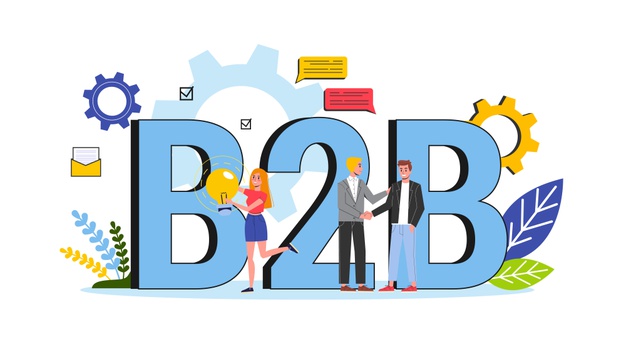
Times are changing. Quite clearly so! What used to be the world of TV commercials and Radio Intervals have been replaced by OTTs and other ad-free streaming platforms. While in the past, advertisements mainly relied upon the push method and were one-sided; today, it is not quite the case. Sales have always been a tough domain. With consumers realizing their power to choose the best, it is vital to redefine inside sales services and lay down some basic sales training for beginners.
Let us first define B2B Sales
B2B Sales stands for Business to Business Sales. It means that a product or service is sold to another business. Here, a business/organization is both the seller and the buyer.
Some Strategy to make your B2B Sales Development Team High Functioning / Training for Sales
- Strategic Selling: The Miller Heiman Group introduced this technique. It helps businesses grow exponentially by implementing an insight-driven approach.
Strategic Selling’s knack lies in identifying the different points of contact in your prospective client company and then influencing each of them by using a strategic approach to make a favourable decision to close the sales.
Let us understand Strategic Selling with an example. Let’s assume that you are a company that offers Mobile network boosters for other companies. After contacting one of the companies, you find out that the Office coordinator is the person who shortlists outside vendors. You then reach out to him and “coach” him about your product. Once you find out that the actual decision-maker is the Admin Head, you can seek an opportunity to meet the Head either alone or with the Office Coordinator. The Coordinator who has already been coached will act as a catalyst in closing the deal.
Additionally, you may also include the IT head to be part of the meeting, probably the “technical buyer”.
This is how you Strategic Sell.
- Solution Selling: This is exactly what the name suggests – Selling a Solution. Rather than aggressively focusing on selling a product/service directly, businesses here can focus on offering solutions to specific problems that are either persistent in the company or the whole industry.
The following steps are the foundation of any Solution Selling process:
- Prepare: Become pro-actively empathetic to the problems that the consumers are trying to solve.
- Diagnose: This is where you should be asking open-ended questions to understand the customized needs of your consumer
- Qualify: After diagnosing their unique problem, offer a solution and qualify your brand as the solution provider
- Educate: The next step is to educate the consumer about the actual product/ service you have to offer.
- Solve: Every business will demand a unique solution for their unique problems. This is where a salesperson should be able to offer tailor-made solutions.
- Close the deal: once you have convinced the client that you can offer the best solution, seal the deal by negotiating the terms and conditions.
- Account-Based Selling: Account-based Selling implies on treating every account as a market of one. This is considered to be one of the best strategies for B2B sales. It involves a multi-touch, multi-channel strategy, which can be implemented in one’s own company to touch base with multiple stakeholders at the prospect’s company.
The following steps can help establish an on-point account-based selling strategy.
- Select the target account: List down all the prospective clients of yours to whom you wish to extend your services. The selection criteria for shortlisting the target-list has to be set based on the company norms.
- Investigate & Identify: Once the companies have been listed down, it is now time to scrutinize the common challenges that are faced across the departments, processes, etc. At this stage, you must identify the key decision-makers and impact makers.
- Provide Personalised Value: This stage should focus on tailoring your value proposition stakeholders differently. Each stakeholder’s goals and challenges have to be addressed in a tailor-made custom, adding a personal touch.
- Outreach: This is when you reach out to all the stakeholders with your customized solutions.
- Social Selling: As mentioned at the beginning of this article, the push technique of marketing has almost died. These days consumers are actually “The king” and make a self-directed choice of purchase. Google searches and Social media searches are two of the most preferred search sources on the internet. Data indicates that 68% of business buyers rely on the internet.
Social Selling refers to the process of building an online presence on Social Media platforms. Now for a B2B business model, some of the most effective platforms are – LinkedIn, Twitter, Facebook, and Instagram.
The key difference between Social Selling and Social Marketing is that the former is about building interpersonal relationships with potential clients and cross-platforms. In contrast, the latter focuses only on broadcasting messages on the Social platform.
Talking specifically for the B2B nature of a business, one of the major Social Media platforms to build a presence on is LinkedIn. This is a marketplace where businesses can contribute to industry-specific content and establish themselves as Market Leaders.
So how do you boost your sales in a B2B business model? What are the strategies that could work for you? Well, there cannot be just one tactic or solution for that. The answer differs for each business.
The above strategies have been time-tested, and you need to understand the nature of these strategies and apply them, either individually or a combination of more than one.



